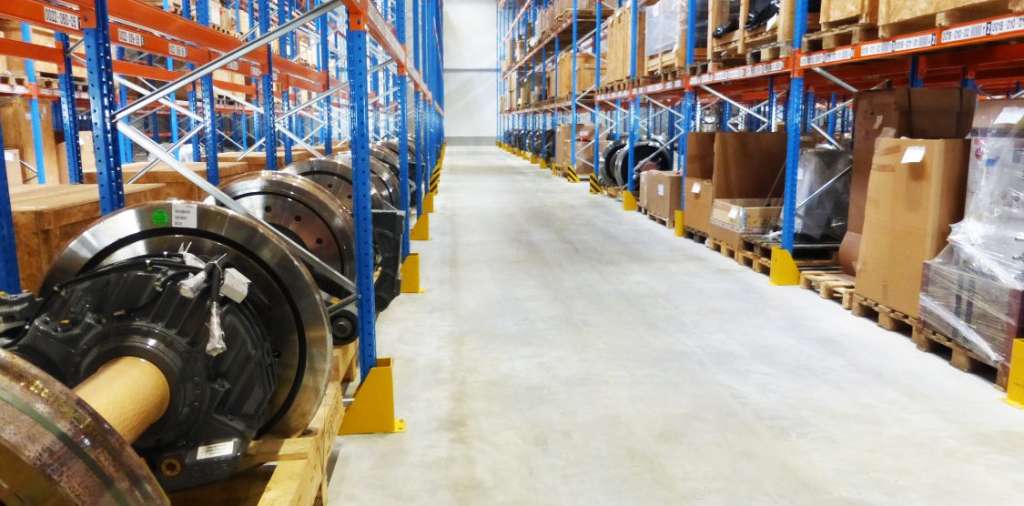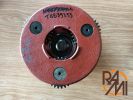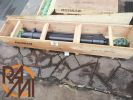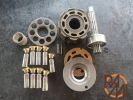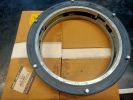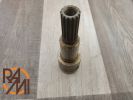Today we want to shed some light on when and how to choose a used or reconditioned spare part instead of a new one.
There are many issues to keep track of so that you don't run into misunderstandings or then find yourself with poor quality or inadequate material.
Below we will discuss:
- When it pays to buy used or refurbished spare parts
- What is the difference between a used and a refurbished spare part
- How to choose a reliable seller
- When to choose a remanufactured part and when to buy a used part
Used or remanufactured parts instead of new
In the construction equipment industry, the choice often does not arise. For machines that are very old (but still running very well), manufacturers no longer produce new parts.
It also often happens that, as a result of mergers between Houses, new parts are hardly available even for newer machines.
To replace a worn or damaged part, there are three choices:
- search for the new part among dealers and workshops (which still stock these parts)
- Rely on specialized companies to source a reconditioned part
- Buy the used spare part
Have you chosen a used spare part? Here's what to do
A used spare part is usually purchased on a seen-and-liked basis and, therefore, once you have paid and collected it, you will not be able to ask for your money back.
A risk to be sure, but one that is often the only way to be able to restart your earthmoving machine, which is otherwise still working fine.
Before buying a used part a couple of tips:
- get a clear idea of what the market offers (price-wise); usually very low prices are synonymous with poor quality or worse, scams
- then rely on a dealer you know or who has a good reputation
- try not to buy with the view of "seen and liked" parts that could compromise the operational safety of your machine
Then for used parts that are not reconditioned or overhauled avoid wear components that affect safety such as:
- tires
- brake pads
- batteries
- oil pumps
- water pumps
There are no problems (always remembering that you are buying used parts on a see-and-be-seen basis) for:
- hoods
- cab access doors
- headlights
- interiors (seats, joysticks)
- windows
- protective grills
- carpentry in general
Instead, do you want an overhauled or reconditioned part for your earthmoving machine?
First of all, a clarification: when talking about earthmoving machines talk about:
- reconditioned spare part
- refurbished spare part
- renewed spare parts
- remanufactured spare parts
always means talking about the same spare part that has always undergone the following processing:
- starting from used spare parts, these are disassembled and first cleaned
- broken or damaged parts or even parts with too much wear and tear are replaced
- new parts (from factory or parallel circuits) are reassembled, and the part is then reassembled
- the resulting replacement part is tested on a test bench to be certain that it is functional and that its performance is compatible with field use.
Generally speaking, it is highly recommended to buy an overhauled spare part when you have to replace a fundamental part within the economy of the earthmoving machine; all the electrical and electro-hydraulic power packs, the pumps of the hydraulic system, the cooling system in general, but also fundamental elements of the driveline, are some examples for which buying an overhauled spare part will make you sleep more soundly.
Obviously, the procedure we have described above means that an overhauled spare part will cost more (in some cases much more) than a seen-and-liked part, but, especially for important components, the certainty that the part will last and ensure the productivity of the earthmoving machine will certainly repay the investment.
If you have a well-equipped and trained in-house workshop you may decide to source used parts and overhaul them in-house, but remember recently built machines really do have a lot of electronics and require significant expertise and instrumentation to intervene successfully.
Added value for reconditioned parts?
First, we repeat again, the reliability and technical ability of the person reselling them.
Second the presence of any warranty on the part that assures you that in case of failure within a certain period of time the part will be repaired free of charge or replaced with an equivalent one.
Third and no less important: in general, reconditioned parts have a longer service life than used, non-reconditioned parts.
A greater investment at the time of purchase generally corresponds to many more hours worked and, therefore, much more productivity relative to the money invested.
The choice then also depends on the type of work and the number of hours per year worked by the machine for which you are buying the spare: if you do a lot of hours and intensive work the reconditioned spare is a must) if the machine works occasionally and on light work, even the spare seen liked can be a good alternative.
The important thing is to get you back in working order on your beloved operating machine!

